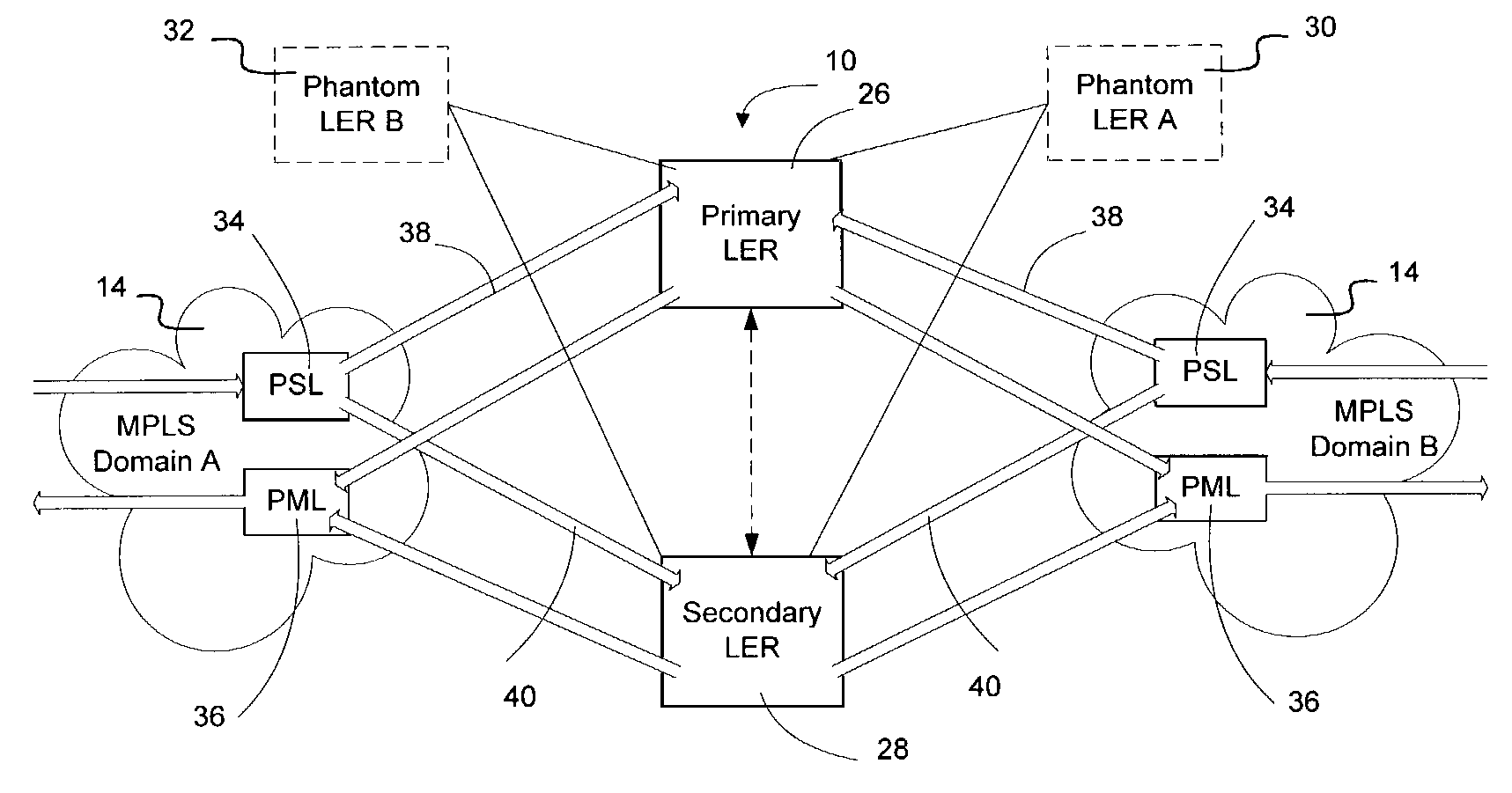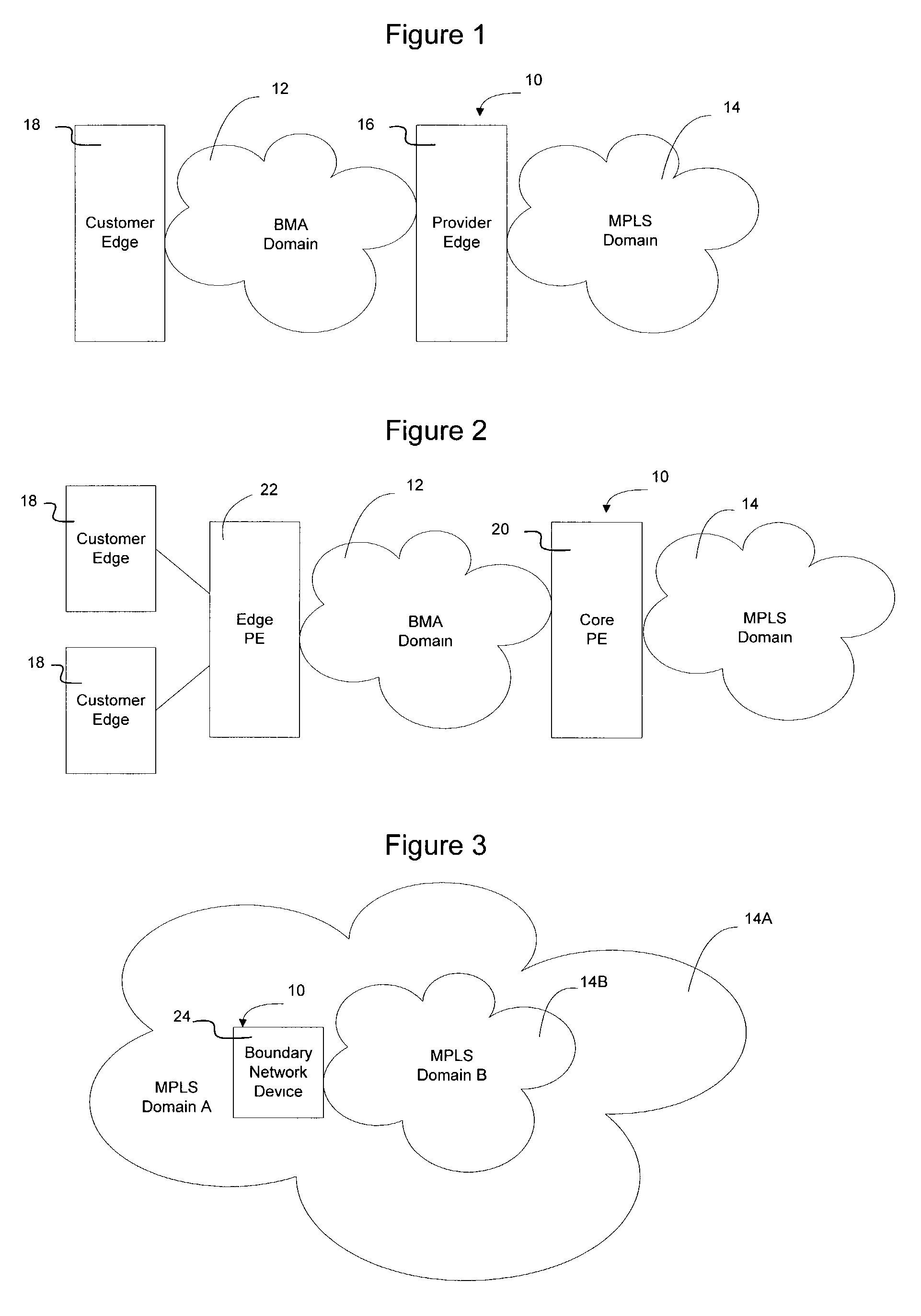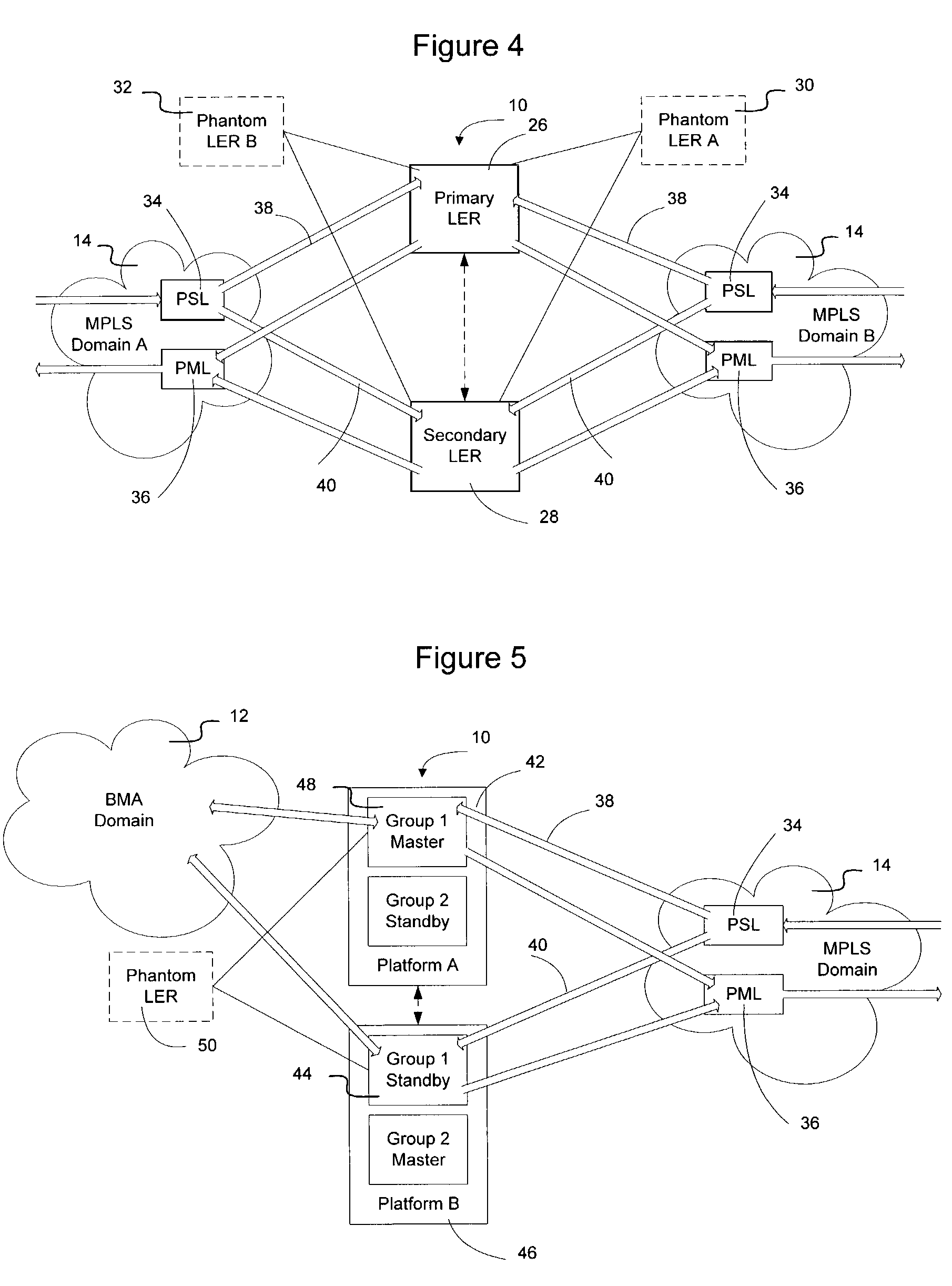Method and apparatus for achieving transparent redundancy at a hierarchical boundary
- Summary
- Abstract
- Description
- Claims
- Application Information
AI Technical Summary
Benefits of technology
Problems solved by technology
Method used
Image
Examples
Embodiment Construction
[0026]The following detailed description sets forth numerous specific details to provide a thorough understanding of the invention. However, those skilled in the art will appreciate that the invention may be practiced without these specific details. In other instances, well-known methods, procedures, components, protocols, algorithms, and circuits have not been described in detail so as not to obscure the invention.
[0027]As described in greater detail below, the method and apparatus of the present invention provides improved resiliency of the network by providing transparent redundancy at a hierarchical boundary. Specifically, redundancy may be provided at a MPLS-MPLS hierarchical boundary or at a BMA-MPLS hierarchical boundary by utilizing local repair mechanisms extant in the domains to select automatically, in each domain, the same boundary network devices as the primary and secondary boundary network devices. Thus, transparent redundancy may be established at the hierarchical bo...
PUM
 Login to View More
Login to View More Abstract
Description
Claims
Application Information
 Login to View More
Login to View More - R&D
- Intellectual Property
- Life Sciences
- Materials
- Tech Scout
- Unparalleled Data Quality
- Higher Quality Content
- 60% Fewer Hallucinations
Browse by: Latest US Patents, China's latest patents, Technical Efficacy Thesaurus, Application Domain, Technology Topic, Popular Technical Reports.
© 2025 PatSnap. All rights reserved.Legal|Privacy policy|Modern Slavery Act Transparency Statement|Sitemap|About US| Contact US: help@patsnap.com



